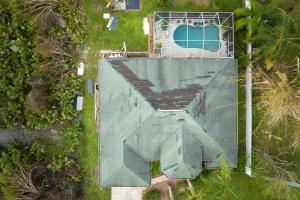
The Importance of Regular Maintenance in Preventing Property Damage
Earl Carr, Jr., president of Gulf 52 in Hammond, Louisiana, emphasizes the value of regular upkeep in property preservation. “Preventative maintenance is an essential part of property ownership. It reduces risks, prolongs the lifespan of structures, and minimizes the likelihood of unexpected problems,” states Carr.
How Regular Maintenance Protects Properties
Regular maintenance involves proactive measures that address wear and tear, environmental impacts, and aging materials. This approach is critical in minimizing property damage and ensuring long-term functionality.
1. Preventing Water Damage
Water damage is one of the most common and costly issues faced by property owners. Routine maintenance, such as checking for leaks, cleaning gutters, and inspecting drainage systems, helps prevent water intrusion and the subsequent damage it causes.
Neglecting these tasks can lead to:
Structural deterioration from persistent moisture.
Mold growth caused by hidden leaks.
Foundation issues due to poor drainage.
By addressing potential water hazards early, property owners can protect their investments and avoid significant repair costs.
2. Protecting Roofing and Exteriors
The roof and exterior surfaces of a property are its first line of defense against the elements. Regular inspections and timely repairs prevent minor issues from escalating into major problems.
Maintenance tasks include:
Checking for loose or missing shingles.
Inspecting flashing around vents and chimneys.
Repairing cracks in siding or exterior walls.
Maintaining the integrity of these components reduces the risk of water infiltration, energy loss, and structural damage.
3. Maintaining HVAC Systems
Heating, ventilation, and air conditioning (HVAC) systems require regular upkeep to ensure efficiency and reliability. Routine maintenance, such as replacing filters, cleaning ducts, and inspecting components, prevents breakdowns and extends the system’s lifespan.
Properly maintained HVAC systems also improve indoor air quality, reducing health risks associated with poor ventilation or mold growth.
4. Electrical and Plumbing Systems
Electrical and plumbing systems are essential to daily operations but can cause significant damage if neglected.
Regular inspections identify potential issues, such as:
Frayed wiring or overloaded circuits, which increase fire risks.
Leaking pipes or corroded fittings, which lead to water damage.
Clogged drains, which cause backups and flooding.
Addressing these problems proactively ensures safety and minimizes the likelihood of disruptive emergencies.
The Cost of Neglecting Maintenance
While routine maintenance requires time and effort, the cost of neglect is far greater. Deferred maintenance often results in:
Expensive Repairs: Small problems, if ignored, can escalate into larger issues that require extensive repairs.
Decreased Property Value: A poorly maintained property is less attractive to buyers or tenants, reducing its market value.
Health and Safety Risks: Neglected maintenance can lead to hazards such as mold growth, structural instability, or electrical fires.
Proactive maintenance not only saves money but also ensures that a property remains safe and functional for its occupants.
The Role of Seasonal Maintenance
Different seasons bring unique challenges that impact property maintenance. Incorporating seasonal tasks into a maintenance plan helps address weather-specific concerns:
Spring: Clean gutters, check for winter damage, and inspect HVAC systems before summer.
Summer: Inspect roofing, repaint exterior surfaces, and seal cracks in driveways or foundations.
Fall: Clear leaves from gutters, check insulation, and prepare plumbing for colder temperatures.
Winter: Inspect heating systems, monitor for ice dams, and check for drafts or leaks.
By aligning maintenance efforts with seasonal needs, property owners can prevent damage caused by changing weather conditions.
Preventative Maintenance as Risk Management
Routine maintenance is a form of risk management, reducing the likelihood of accidents, breakdowns, and unexpected damage. For businesses, this approach ensures continuity of operations, while for homeowners, it provides peace of mind.
Maintenance plans should include:
Regular Inspections: Identifying wear and tear early allows for timely repairs.
Scheduled Upgrades: Replacing aging systems or materials prevents failures.
Emergency Preparedness: Ensuring that critical systems, such as generators and sump pumps, are in working order reduces risks during emergencies.
The Value of Professional Assistance
While property owners can handle many maintenance tasks independently, professional inspections and services are often necessary for complex systems or hard-to-reach areas. Licensed professionals bring expertise and tools that ensure thorough and effective maintenance.
For example:
Roofing professionals can identify subtle issues that may not be visible from the ground.
HVAC technicians can perform detailed inspections and tune-ups for optimal system performance.
Mold remediation specialists can address moisture issues before they lead to significant damage.
A Long-Term Investment in Property Health
Regular maintenance is more than a checklist—it’s an investment in the health, safety, and value of a property. By dedicating time and resources to proactive upkeep, property owners can:
Protect against unexpected damage.
Extend the lifespan of materials and systems.
Enhance the overall quality of the living or working environment.
As property owners in Hammond and across South Louisiana know, the challenges of weather, wear, and aging infrastructure make maintenance a necessity, not a luxury.
Morgan Thomas
Rhino Digital, LLC
+1 504-875-5036
email us here
Visit us on social media:
Facebook
Distribution channels: Building & Construction Industry, Culture, Society & Lifestyle, Environment, Natural Disasters, Real Estate & Property Management
Legal Disclaimer:
EIN Presswire provides this news content "as is" without warranty of any kind. We do not accept any responsibility or liability for the accuracy, content, images, videos, licenses, completeness, legality, or reliability of the information contained in this article. If you have any complaints or copyright issues related to this article, kindly contact the author above.
Submit your press release

